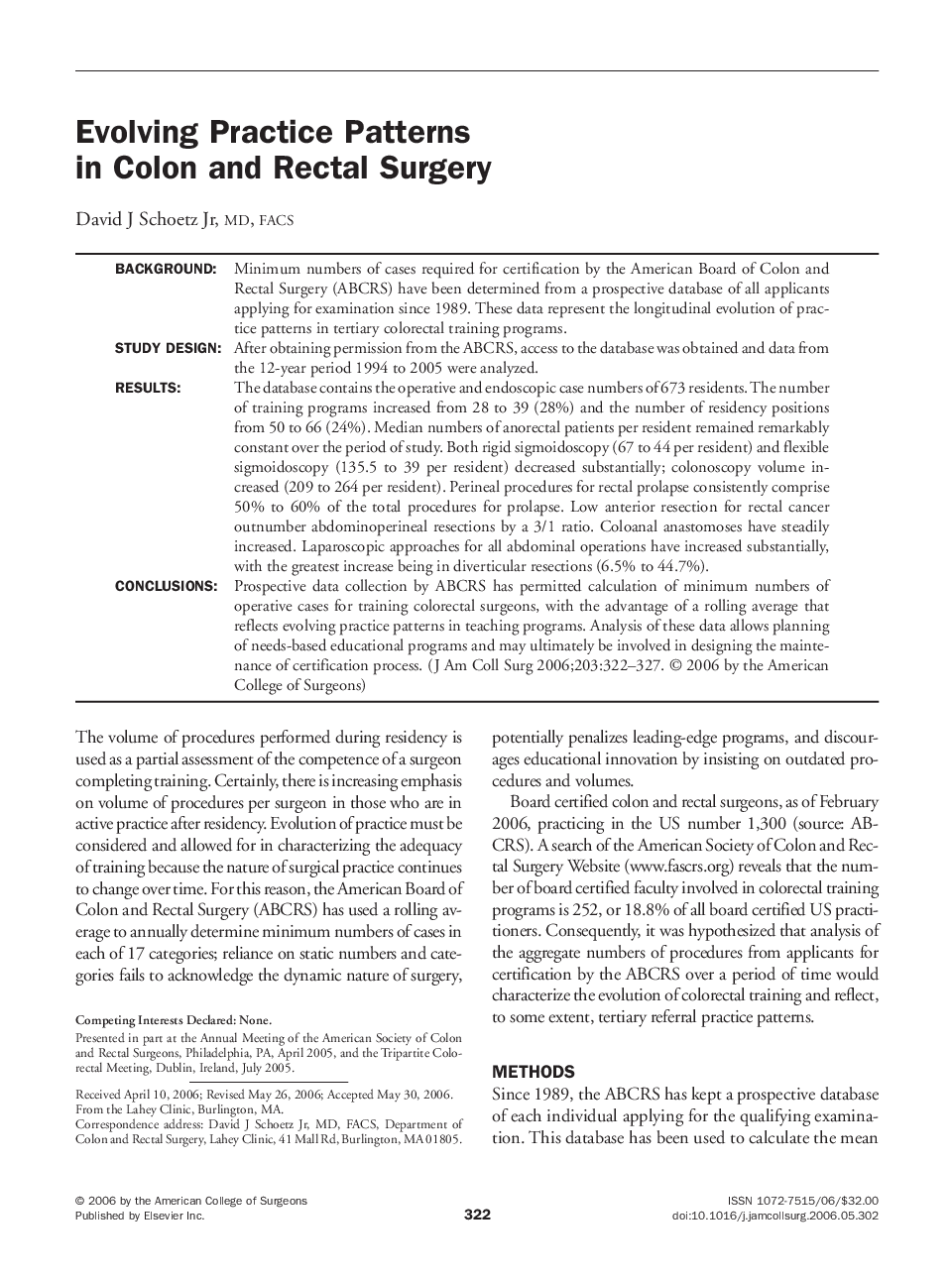| Article ID | Journal | Published Year | Pages | File Type |
|---|---|---|---|---|
| 4295948 | Journal of the American College of Surgeons | 2006 | 6 Pages |
BackgroundMinimum numbers of cases required for certification by the American Board of Colon and Rectal Surgery (ABCRS) have been determined from a prospective database of all applicants applying for examination since 1989. These data represent the longitudinal evolution of practice patterns in tertiary colorectal training programs.Study designAfter obtaining permission from the ABCRS, access to the database was obtained and data from the 12-year period 1994 to 2005 were analyzed.ResultsThe database contains the operative and endoscopic case numbers of 673 residents. The number of training programs increased from 28 to 39 (28%) and the number of residency positions from 50 to 66 (24%). Median numbers of anorectal patients per resident remained remarkably constant over the period of study. Both rigid sigmoidoscopy (67 to 44 per resident) and flexible sigmoidoscopy (135.5 to 39 per resident) decreased substantially; colonoscopy volume increased (209 to 264 per resident). Perineal procedures for rectal prolapse consistently comprise 50% to 60% of the total procedures for prolapse. Low anterior resection for rectal cancer outnumber abdominoperineal resections by a 3/1 ratio. Coloanal anastomoses have steadily increased. Laparoscopic approaches for all abdominal operations have increased substantially, with the greatest increase being in diverticular resections (6.5% to 44.7%).ConclusionsProspective data collection by ABCRS has permitted calculation of minimum numbers of operative cases for training colorectal surgeons, with the advantage of a rolling average that reflects evolving practice patterns in teaching programs. Analysis of these data allows planning of needs-based educational programs and may ultimately be involved in designing the maintenance of certification process.
